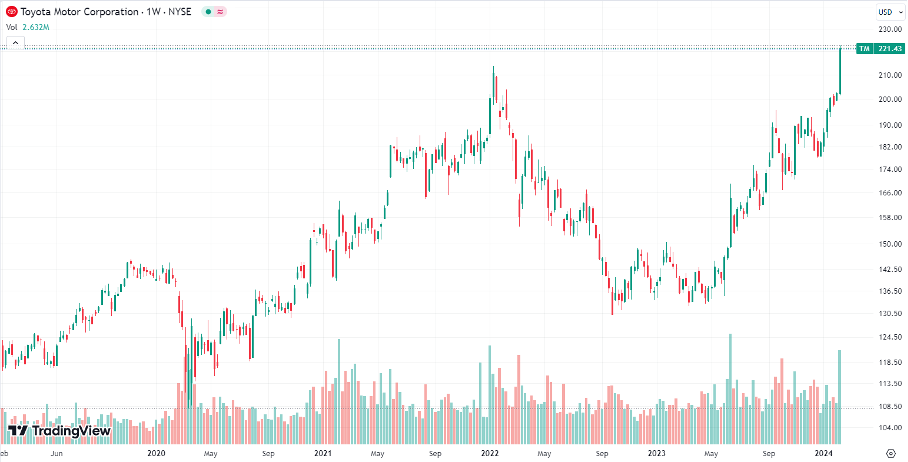
Performance of Toyota Motor Corporation´s stock over 5 years. Source: tradingview.com
Trading Decision
Toyota represents an attractive investment opportunity, especially due to its strong position in the hybrid vehicle segment. Seeing how Toyota's shares rose as much as 7.3% and reached a new high, I decided that on the next short-term correction and unchanged fundamental circumstances, I would buy shares of this company. * The equally positive news about Honda and Nissan convinced me that this sector and may have good prospects for the future.
Market Analysis
My current perception is that the market itself is now reassessing the potential of hybrid products, in which Toyota has a strong position. The waning demand for pure electric vehicles, coupled with price increases that have helped improve profitability per vehicle, appear to be playing into the hands of Toyota and its competitors.[1]
Strategy and Outlook
Given Toyota's strong financial performance in the third quarter and its investment in electrification at its U.S. plant in Kentucky, I believe this company has a solid foundation for future growth. Thus, I have decided to hold Toyota stock for the long term, as well as selectively increase my positions in Honda and Nissan, expecting the momentum in the hybrid vehicle market to continue to grow. [2]
Conclusion
Today was a very rewarding day for me as a trader. The decision to focus on the automotive sector, particularly companies with solid hybrid line-ups, proved to be the right one. This week taught me the importance of flexibility and the ability to react quickly to market signals. Thanks to the success of Toyota and its rivals in the hybrid vehicle space, I am confident that I have the right strategy for my future trading and investing.
* Past performance is no guarantee of future results.
[1,2] Forward-looking statements are based on assumptions and current expectations, which may be inaccurate, or based on the current economic environment which is subject to change. Such statements are not guaranteeing of future performance. They involve risks and other uncertainties which are difficult to predict. Results could differ materially from those expressed or implied in any forward-looking statements.








